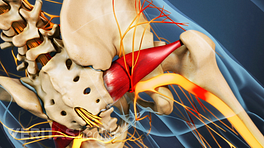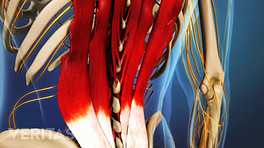Sudden episodes of intense pain that are not controlled by a patient’s existing narcotic medication—called breakthrough pain—can be unnerving and affect quality of life.
The pain flares typically reach their peak within 5 to 15 minutes and often have no clear cause. 1 Smith HS. Considerations in selecting rapid-onset opioids for the management of breakthrough pain. J Pain Res. 2013;6:189-200.
See Types of Back Pain: Acute Pain, Chronic Pain, and Neuropathic Pain
Learning more about breakthrough pain and strategies to alleviate it can help reduce the pain. A possible secondary benefit may be feeling more in control and relying less on medications.
In This Article:
Types of Breakthrough Pain
Breakthrough pain can be divided into three categories:
- Pain occurring for no apparent reason, medically termed idiopathic pain
- Pain triggered by some movement in the body, such as getting dressed
- End-of-dose pain, in which a pain reliever’s effectiveness ends before it is time for the next scheduled dose
Sharing a detailed pain diary with the doctor can help determine which type of breakthrough pain is experienced.
Activity-related breakthrough pain is more common in those with pain from degenerative spine disease or osteoarthritis. 2 Perry G. Fine. Incidence, Prevalence, and Characteristics. The Diagnosis and Treatment of Breakthrough Pain. New York, New York: Oxford University Press, 2008.
When breakthrough pain is related to movement, the doctor and patient can work together to develop the best mix of physical activity and rest. Breakthrough pain is eased for some people when they walk or do other moderate forms of exercise, but others may find they need to avoid strenuous activity. Wearing an orthotic or other assistive products or making changes to the home environment may also ease some of the pain.
Reviewing Pain Medications
If breakthrough pain occurs often, such as every four to six hours, it may be helpful to discuss overall pain control with the doctor.
Changing either the round-the-clock narcotic medication or the medication for breakthrough pain—or both—may be an option. It is common for a medication that was effective for a time to gradually become less effective. Taking the existing medication on a different schedule may also be considered.
Dealing with Depression
Breakthrough pain can be an isolating experience, leading to depression and anxiety.
The primary care physician typically can refer the patient to a specialist, such as a psychologist or psychiatrist, for treatment of depression.
Treatment may include talk therapy and/or anti-depressant medications.
Exploring Alternative Therapies for Breakthrough Pain
Treatments that do not involve medication often reduce pain and improve mental outlook. These are some common therapies:
- Physical therapy uses targeted exercises to enhance strength and flexibility. This in turn enables the release of endorphins, the body’s natural mood enhancer and pain reliever. Water therapy or exercises done in warm water pools, for example, can be helpful for those who find land-based exercise too painful.
- Biofeedback teaches people how to control certain physiological processes. Sensors are attached to record body functions while a therapist oversees the process. The information gathered is then used by the therapist to develop individualized strategies, such as visualization and relaxation, to ease symptoms.
- Meditation may help calm the body and mind and redirect attention away from the pain.
- Massage can help relax muscles and release tension and anxiety caused by breakthrough pain.
In some cases, non-medication therapies are successful enough that the amount of medication can be reduced.











